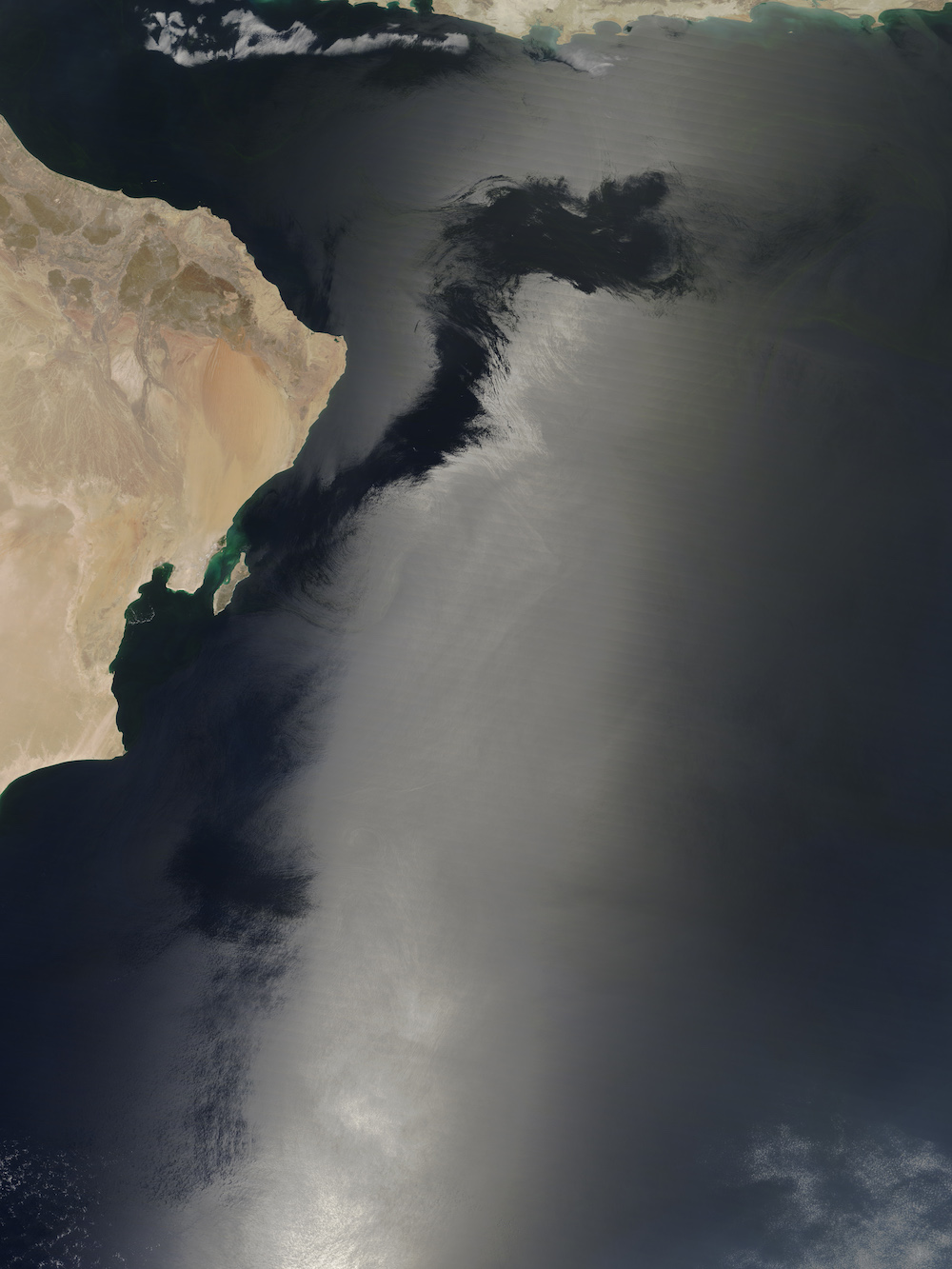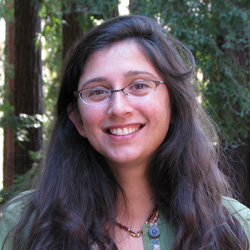Eerie Dark Swath Extends Across Arabian Satellite Photo

The forces of darkness seem to be coalescing in the Arabian Sea in a spooky satellite image taken from space.
But the eerie supernatural effect, in which the tentacles of darkness seem to be intruding into regions of light, has a completely ordinary cause: normal weather patterns in the area.
The image was taken on April 11 using the Moderate Resolution Imaging Spectroradiometer aboard NASA's Terra satellite. When satellites gather light from above smooth waters, the light reflects upward like a mirror. But once water gets wavy, light hitting the water's surface reflects up toward the satellite at many different orientations — meaning less light reaches the satellite's photodetectors, according to NASA's Earth Observatory. When the sun, the satellite and the water are all aligned, the water appears much brighter. The phenomenon is known as sunglint, agency officials said.
When someone is looking at satellite images of Earth, sunglint typically appears as a streak of bright light that shows up in the middle of the satellite image. In this image, the sunglint appears most pronounced in the bottom central area of the image, which shows the Arabian Sea.
While some of the most spectacular examples of sunglint may appear in space photos, the phenomenon is also terrestrial: Anyone sitting on the beach who has looked out at a bright line of sunlight hitting the ocean has seen a similar process, known as a glitter path.
Originally published on Live Science.
Breaking space news, the latest updates on rocket launches, skywatching events and more!

Tia is the assistant managing editor and was previously a senior writer for Live Science, a Space.com sister site. Her work has appeared in Scientific American, Wired.com and other outlets. She holds a master's degree in bioengineering from the University of Washington, a graduate certificate in science writing from UC Santa Cruz and a bachelor's degree in mechanical engineering from the University of Texas at Austin. Tia was part of a team at the Milwaukee Journal Sentinel that published the Empty Cradles series on preterm births, which won multiple awards, including the 2012 Casey Medal for Meritorious Journalism.

